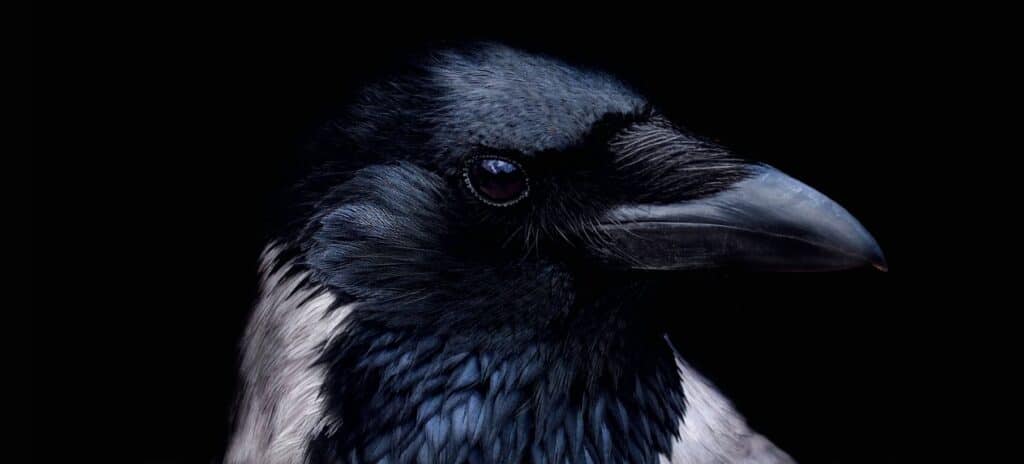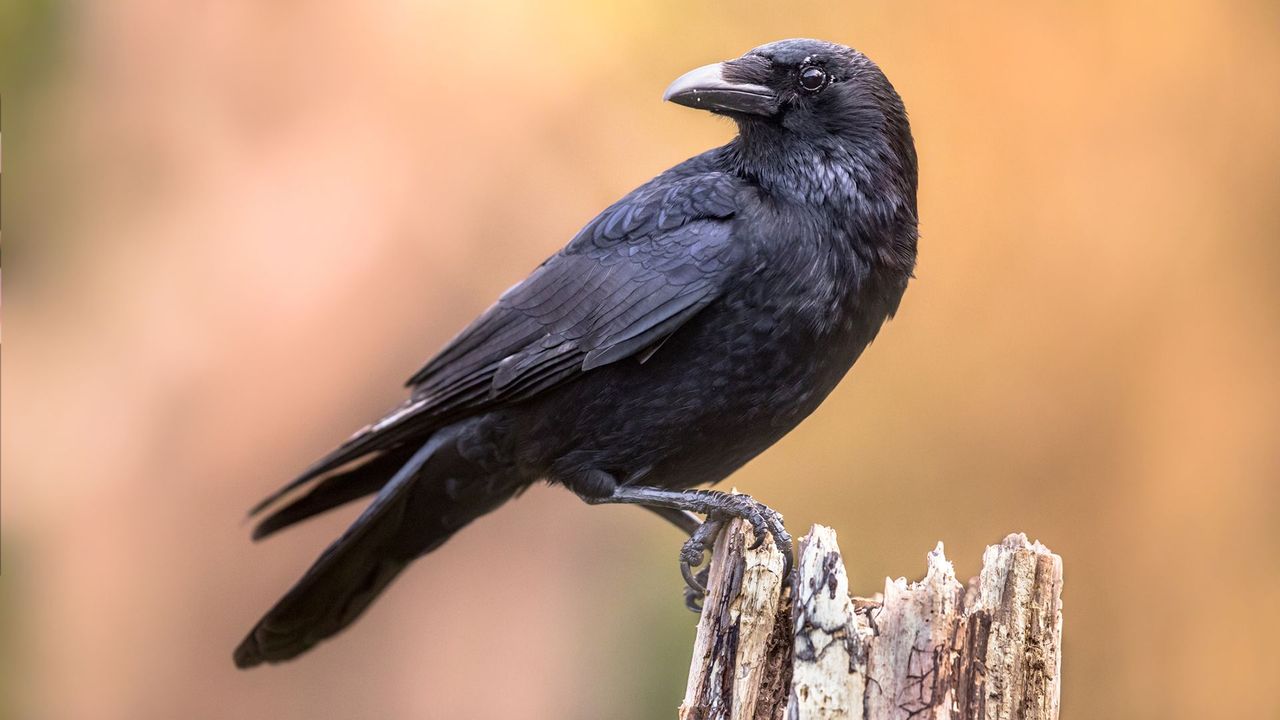Crows exhibit remarkable intelligence, often rivaling that of primates. They use tools, solve complex puzzles, and recognize human faces.
Crows are more than just ordinary birds; they possess extraordinary cognitive abilities. These intelligent creatures can solve intricate problems and use tools in innovative ways. Studies show that crows can remember human faces and even hold grudges. Their problem-solving skills are so advanced that they can complete tasks that require multiple steps.
Crows also communicate with each other using a variety of calls and gestures. This fascinating behavior highlights their complex social structures and advanced brain functions. Observing crows offers valuable insights into animal intelligence and challenges our understanding of what makes a species intelligent.
Crows: A Glimpse Into Avian Intelligence
Crows are extraordinary birds known for their remarkable intelligence. Their behavior and problem-solving skills amaze scientists and bird enthusiasts alike. Let’s delve into their fascinating world.
Brain Size And Cognitive Abilities
Crows have large brains relative to their body size. This contributes to their advanced cognitive abilities. Studies show that crows can use tools and solve complex puzzles. They can even remember human faces for years.
Here are some key cognitive abilities of crows:
- Tool Use: Crows can make and use tools to obtain food.
- Memory: They remember locations of food caches for months.
- Problem-Solving: Crows solve multi-step puzzles effortlessly.
Social Structures And Communication
Crows live in complex social structures. They communicate using a variety of calls and gestures. Their social interactions are sophisticated and highly organized.
| Social Behavior | Description |
|---|---|
| Family Units | Crows form close-knit family groups. |
| Mobbing Behavior | They work together to drive away predators. |
| Communication | Crows use complex vocalizations and body language. |
Crows also engage in play. This is a sign of their intelligence and social complexity. Watching crows interact reveals their advanced mental abilities. Their behaviors show they are not just birds, but intelligent beings.

Credit: www.birdlife.org
Tool Use And Problem Solving
Crows are among the most intelligent birds on Earth. Their ability to use tools and solve problems sets them apart. This fascinating behavior showcases their advanced cognitive skills.
Documented Instances Of Tool Use
Crows have been observed using various tools in the wild. They use sticks to extract insects from tree bark. They also drop nuts on roads for cars to crack open.
| Instance | Description |
|---|---|
| Using Sticks | Crows fashion sticks to extract insects from bark. |
| Nut Cracking | Crows drop nuts on roads for cars to crack open. |
| Fishing Tools | They use leaves or feathers to bait fish. |
Innovative Problem-solving Tactics
Crows exhibit creative problem-solving tactics. They adapt to new challenges swiftly. They have been seen solving complex puzzles.
- Water Displacement: Crows drop stones in water to raise the water level and access floating food.
- Sequential Tool Use: They use multiple tools in the correct order to achieve a goal.
- Memory and Learning: Crows remember solutions and teach other crows.
These behaviors show their intelligence and adaptability. Crows are truly remarkable creatures.
Memory And Facial Recognition
Crows are known for their remarkable intelligence. One of their fascinating abilities is their memory, especially in recognizing human faces. These birds can remember and identify specific people, making them unique in the animal kingdom.
Remembering Human Faces
Crows can remember human faces for years. Studies show they can distinguish between friendly and unfriendly faces. They even warn other crows about potential threats.
Researchers wore masks to test this ability. Crows remembered and reacted to these masks even after long periods.
Spatial Memory And Food Storage
Crows have excellent spatial memory. They store food in different places to eat later. This behavior is called caching.
They remember the exact locations of their food caches. They even recall the quality of the stored food.
Their ability to plan ahead shows their high level of intelligence.
Language And Vocal Mimicry
Crows are more than just black birds. They have a rich language system. Their ability to mimic sounds is extraordinary. This section explores their complex vocalizations and the amazing skill to mimic human speech.
Complex Vocalizations And Meanings
Crows use a variety of sounds to communicate. They have calls for danger, food, and social interaction. Each call has a specific meaning.
Scientists have studied their calls. They found that crows can warn others of predators. They also have calls to signal the presence of food. Social calls help them stay in touch with their group.
| Call Type | Meaning |
|---|---|
| Alarm Call | Danger Nearby |
| Food Call | Food Source Found |
| Social Call | Group Communication |
Ability To Mimic Human Speech
Crows can mimic human speech. They are like parrots in this way. This ability shows their high intelligence.
Some crows can say words and short phrases. They listen and learn from humans. This skill amazes many people.
Crows use their mimicry to interact with us. They can even copy other sounds like car alarms. This makes them unique among birds.
- Crows can learn words quickly.
- They understand the context of some words.
- They use mimicry to bond with humans.
Social Learning And Culture
Crows are among the smartest birds on Earth. Their intelligence is remarkable. They exhibit behaviors indicating advanced cognitive abilities. One fascinating aspect is their social learning and culture. This means they can learn from each other and pass down knowledge.
Transmission Of Knowledge
Crows teach each other new skills. They learn by observing their peers. For example, a crow might learn to use a tool by watching another crow. This shows they can pass on important information. It’s like a form of education in the crow community.
Here are some ways crows share knowledge:
- Demonstrating how to use tools
- Sharing food sources
- Communicating danger signals
| Behavior | Description |
|---|---|
| Tool Use | Crows use sticks to extract insects from bark. |
| Food Sharing | They show each other where to find food. |
| Danger Signals | They alert others about predators or threats. |
Evidence Of Cultural Behaviors
Researchers have found that crows have cultural behaviors. These are behaviors passed down through generations. One example is their use of tools. In some regions, crows use specific tools that other crows don’t use. This shows a cultural difference between groups.
Some examples of crow culture include:
- Using different tools in different regions
- Unique ways of hunting or gathering food
- Regional dialects in their calls
These cultural behaviors show how complex crow societies are. They are not just acting on instinct. Instead, they are learning and adapting in sophisticated ways.

Credit: www.ottoenvironmental.com
Playful Behaviors And Emotions
Crows are captivating creatures known for their remarkable intelligence. One of the most intriguing aspects of their behavior is their ability to engage in play and show emotions. These playful behaviors and emotional displays offer a glimpse into the complex minds of these birds.
Engaging In Play
Crows often engage in playful activities that mirror those of young children. They might play with objects, such as sticks or stones. They can also be seen sliding down snowy rooftops or playing chase with each other. These activities are not just for survival. They show that crows seek enjoyment and stimulation.
Playful behaviors in crows include:
- Playing with objects
- Sliding on surfaces
- Chasing each other
These behaviors demonstrate their need for mental and physical exercise. It also highlights their advanced cognitive abilities.
Signs Of Emotional Intelligence
Crows also show signs of emotional intelligence. They can recognize individual human faces. They remember if a person is friendly or hostile. They even mourn their dead, often gathering around a fallen member.
Signs of emotional intelligence in crows include:
- Recognizing human faces
- Remembering past interactions
- Mourning their dead
These behaviors suggest that crows experience a range of emotions. They are not just instinct-driven creatures. They have complex social structures and emotional responses.
| Behavior | Significance |
|---|---|
| Playing with objects | Shows cognitive ability and curiosity |
| Sliding on surfaces | Indicates enjoyment and playfulness |
| Recognizing faces | Demonstrates memory and social intelligence |
| Mourning their dead | Shows emotional depth and social bonds |
Through these behaviors, crows reveal their intelligence and emotional capacities. These traits make them one of the most fascinating birds to study and observe.
Crows In Mythology And Culture
Throughout history, crows have held a significant place in mythology and culture. Their intelligence and mysterious behavior have inspired countless stories. This section delves into the symbolic meanings of crows across different cultures and their representation in literature and film.
Symbolic Meanings Across Cultures
Crows are often seen as symbols of transformation and change. In many cultures, they are messengers between the living and the dead. Here’s a look at what crows symbolize in different parts of the world:
| Culture | Symbolic Meaning |
|---|---|
| Native American | Change, Transformation, Magic |
| Celtic | Prophecy, War, Death |
| Chinese | Longevity, Good Fortune |
| Hindu | Ancestors, Protection |
Crows In Literature And Film
Crows often appear in literature and film, symbolizing mystery and intelligence. Here are a few notable examples:
- Edgar Allan Poe’s “The Raven”: This poem features a talking raven symbolizing sorrow and loss.
- Alfred Hitchcock’s “The Birds”: This film portrays crows as harbingers of chaos and fear.
- George R.R. Martin’s “A Song of Ice and Fire”: Crows serve as messengers and symbols of the Night’s Watch.
Crows captivate our imagination with their complex roles in mythology and culture. Their presence in stories and films adds depth and intrigue, reflecting their real-life intelligence and mystery.
Conservation Efforts And Coexistence
Crows are among the most intelligent birds. They have fascinated scientists and nature enthusiasts alike. Conservation efforts aim to protect these smart creatures. Coexistence between humans and crows is essential for a balanced ecosystem.
Challenges In Urban Environments
Urban areas pose several challenges for crows. The major issues include:
- Habitat Loss: Cities expand, reducing natural spaces for crows.
- Pollution: Air and water pollution affect their health.
- Food Scarcity: Finding natural food becomes difficult.
- Human Interference: People often disturb or harm them.
Promoting A Harmonious Relationship
To ensure a harmonious relationship between humans and crows, consider the following steps:
- Education: Teach people about the importance of crows.
- Feeding Stations: Set up safe feeding spots.
- Green Spaces: Create parks and gardens for their habitat.
- Reduce Pollution: Keep the environment clean.
By addressing these challenges, we can foster a better coexistence. Crows contribute significantly to our ecosystem. Their preservation is crucial for maintaining nature’s balance.

Credit: www.bbc.com
Frequently Asked Questions
How Intelligent Are Crows?
Crows are exceptionally intelligent. They can solve complex problems and use tools. Their cognitive abilities are comparable to those of primates.
Do Crows Recognize Human Faces?
Yes, crows can recognize human faces. They remember people who have been kind or threatening to them, often for years.
Can Crows Use Tools?
Absolutely, crows use tools. They fashion sticks and leaves into tools to extract insects and other food from hard-to-reach places.
What Do Crows Eat?
Crows have a varied diet. They eat insects, small animals, fruits, seeds, and even garbage. They are highly adaptable scavengers.
Conclusion
Crows exhibit remarkable intelligence and complex behaviors. Their problem-solving skills and social interactions are truly fascinating. Understanding these birds can deepen our appreciation for wildlife. Next time you see a crow, remember their incredible abilities. Keep exploring nature’s wonders and stay curious about the world around you.










